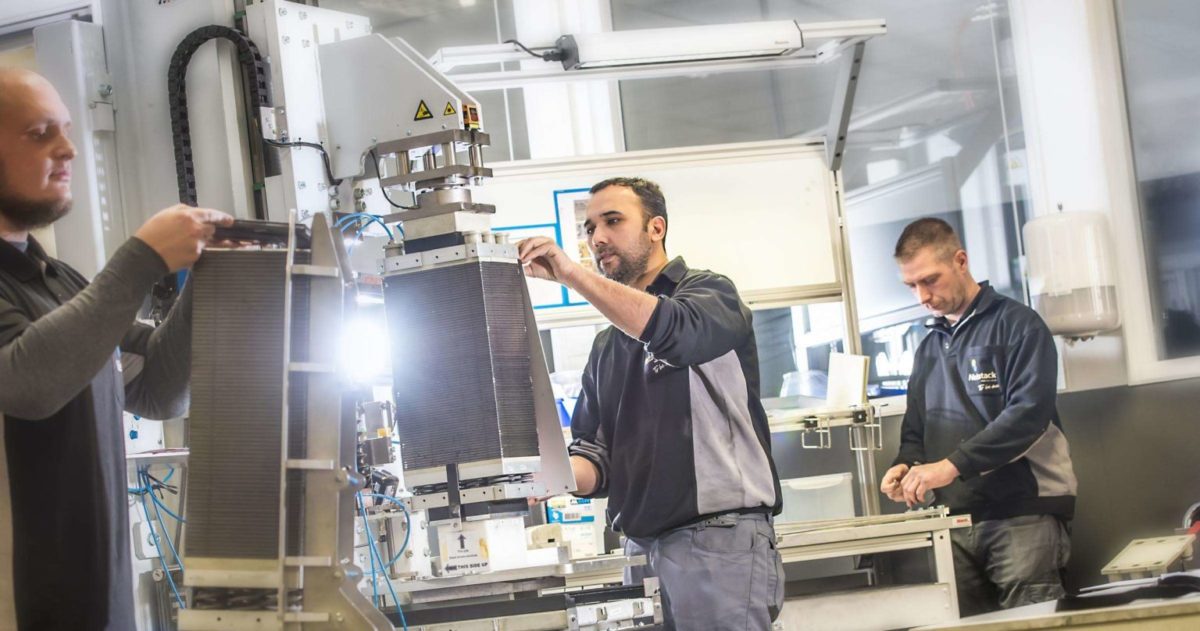Lavo and its joint venture partner Nedstack said on Monday they had signed a memorandum of understanding with Springfield City Group (SCG) to develop an AU$20 million (US$15.7 million) hydrogen fuel cell manufacturing facility.
Lavo CEO Alan Yu said preparations for the facility, which is supported by a grant from the Advanced Manufacturing Growth Centre, are already underway. Construction is expected to begin in the third quarter of 2021 with a targeted timeline for completion by early 2022. Production is expected to commence later in the same year.
“We are very excited to be working with the SCG and helping deliver on its vision of a city that leads in innovation, design, entrepreneurship and, importantly, sustainability,” Yu said. “This MoU demonstrates the immense potential of the Lavo System, and we look forward to the exciting collaborations that we will undertake alongside SCG. In the meantime, we continue to work closely with our production and manufacturing partners to bring this incredible technology into homes by July 2021.”
The development will allow for the local production of Dutch company Nedstack’s polymer electrolyte membrane (PEM) fuel cell technology for Lavo and other customers across the Australasia region.
Nedstack’s PEM fuel cells are a critical component in the Lavo System, launched late last year and described by the company as the first and only commercial-ready hydrogen energy storage system in the world designed for everyday use by residential homes and businesses.
Lavo said the hydrogen battery, which was developed in conjunction with researchers at the University of New South Wales and stores 40 kWh of energy, provides a more complete, versatile and sustainable energy storage solution than any alternative currently on the market. In a statement, the company said the “technology has a storage capacity three times greater and a lifetime more than two times longer compared to market alternatives”.
Designed to be portable, the Lavo System employs canisters containing a patented metal hydride that absorbs hydrogen providing stable, long-term storage.
The Lavo System will initially be aimed at residential and commercial markets, including off-grid regional and rural properties, and telecommunication towers. Across these segments the company estimates the market for its technology exceeds AU$2 billion in Australia, expanding on a global scale to AU$40 billion.

SCG chairman Maha Sinnathamby said land for the hydrogen fuel cell manufacturing plant has been set aside in Springfield City’s 40-hectare Vicinity business park. Sinnathamby said the MoU would also allow SCG and Lavo to work together to identify other renewable energy opportunities, including the integration of Lavo technology into utility scale solar farms developed in the master-planned community.
“As our relationship grows, we look forward to exploring many more opportunities to apply Lavo’s innovative technology and expertise more broadly to deliver on our blueprint for a clean-green future,” Sinnathamby said.
Sinnathamby said SCG had adopted an eco-friendly strategy for Springfield City – where the population of 46,000 is expected to triple over the next two decades – which includes “producing more energy than we consume by 2038”. Under the strategy, at least a third of Springfield City will be set aside as ‘green space’ and residents will have widespread access to electric vehicle (EV) charging stations and a hydrogen bus network and see 100% of their power delivered through renewable sources.
“We have one chance – and the responsibility to our residents both now and into the future – to get this right and be an ongoing exemplar for others to follow,” Sinnathamby said.
This content is protected by copyright and may not be reused. If you want to cooperate with us and would like to reuse some of our content, please contact: editors@pv-magazine.com.




Interested in any updates
good accurate info thanks